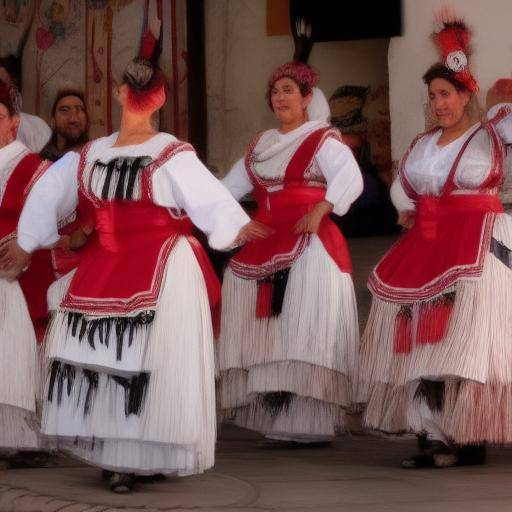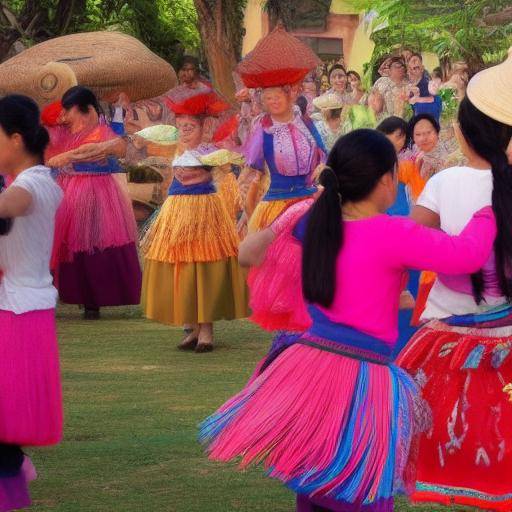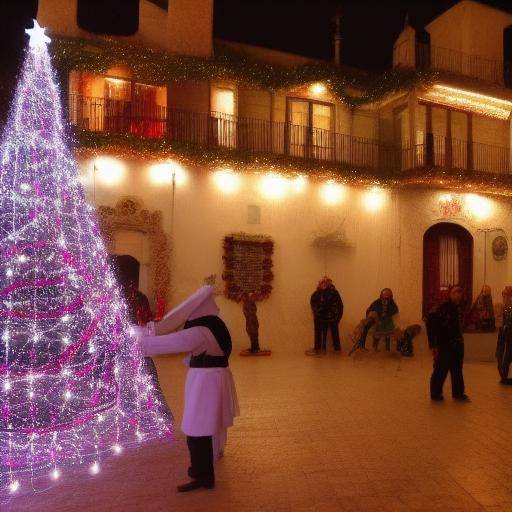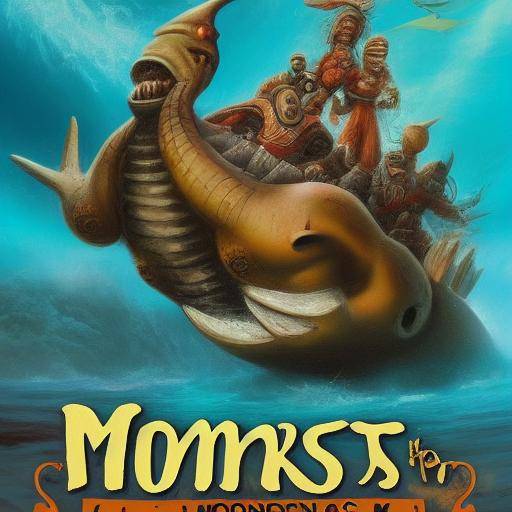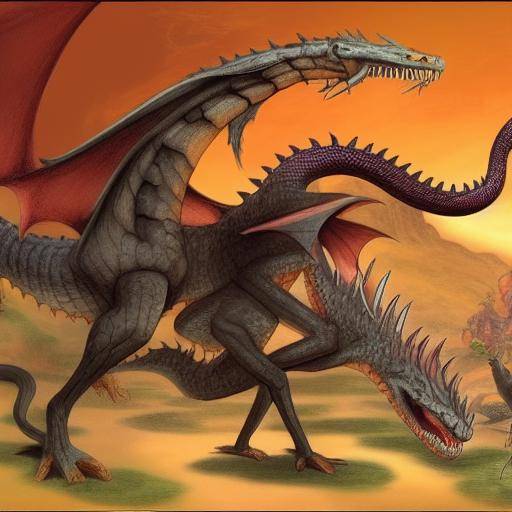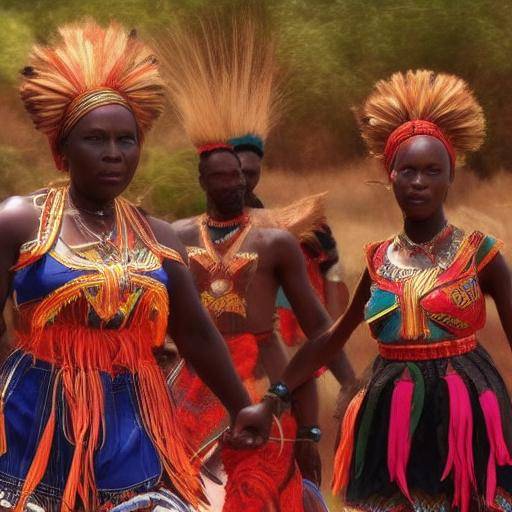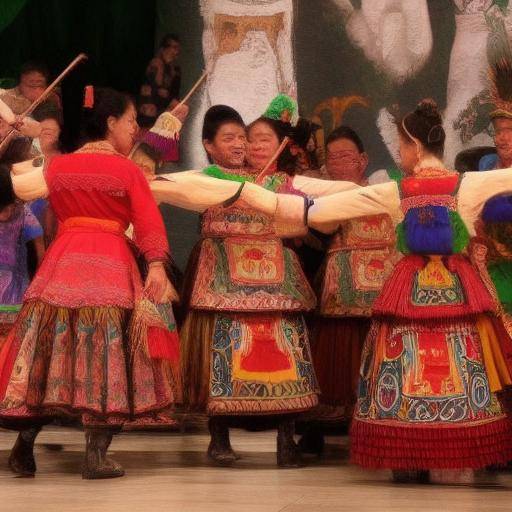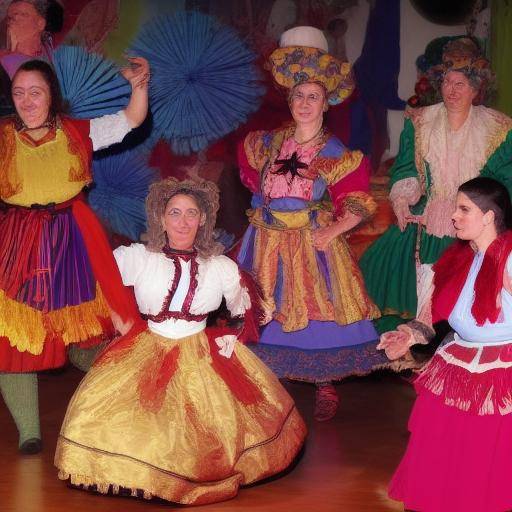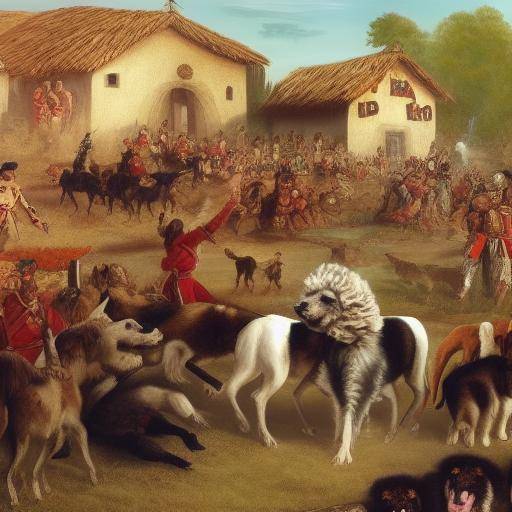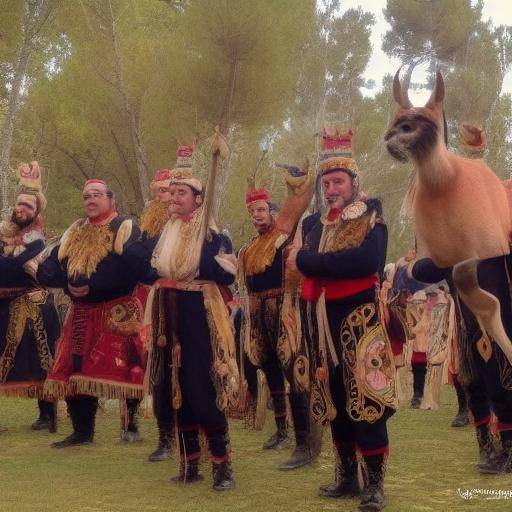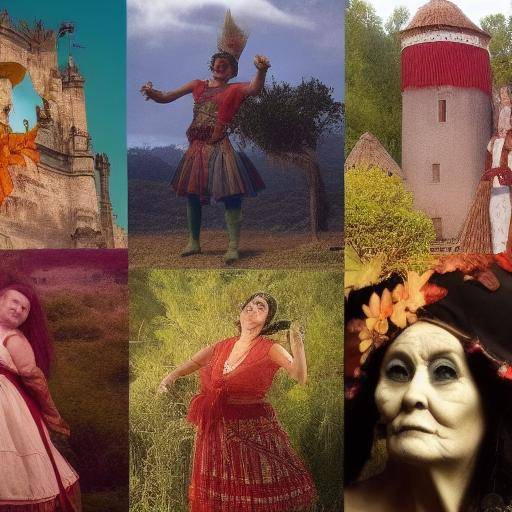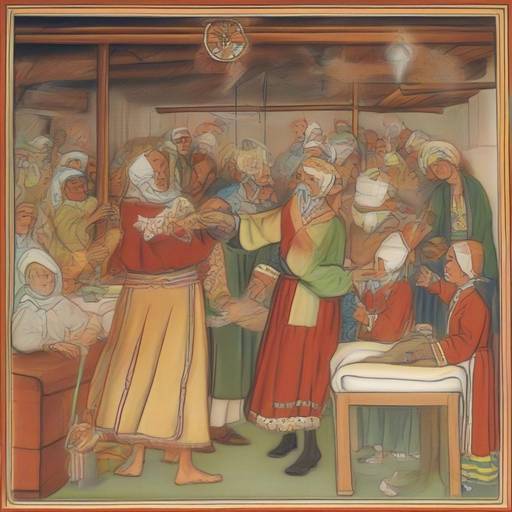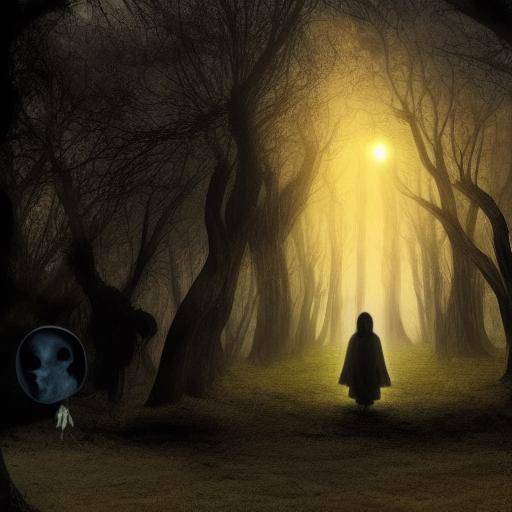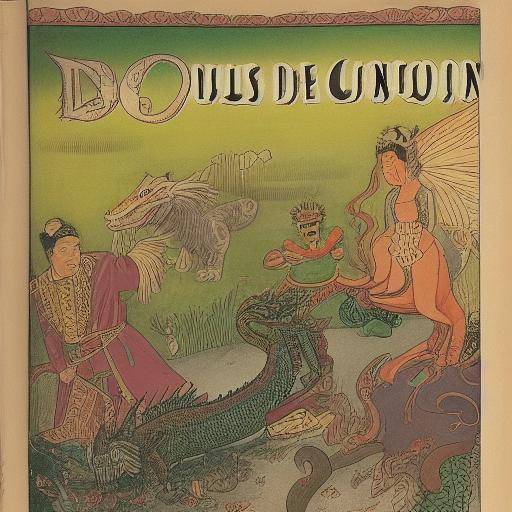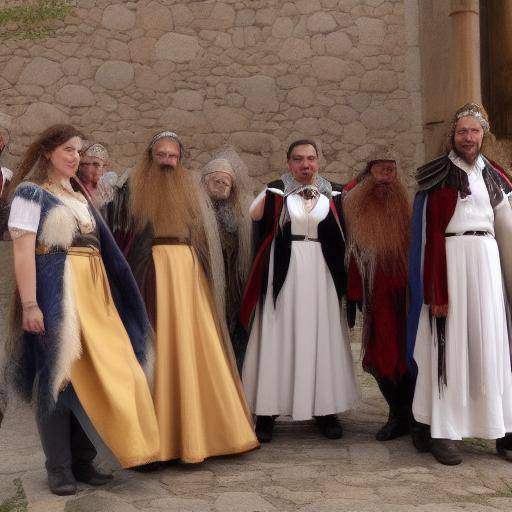
Guardian spirits have been a fundamental part of Scandinavian folklore for centuries. In this article, we will explore in depth the role of these mystical beings in the Nordic legends, their influence on Scandinavian culture and its relevance today. From its historical origins to its impact on modern society, this guide will provide a complete vision of the guardian spirits in the context of Scandinavian folklore and the legends surrounding them.
Introduction
Scandinavian folklore is rich in myths, legends and magical beings that have captured the imagination of generations. One of the most fascinating elements of this tradition is the notion of the guardian spirits, supernatural entities that are believed to protect and guide people in their daily lives. These beings have been venerated and feared over the centuries, and their lasting influence on contemporary culture. In this guide, we will explore in detail the role of the guardian spirits in Scandinavian folklore and how they continue to impact the cultural narrative of the region.
History and Background
The guardian spirits, known as "fylgjur" in Nordic mythology, have their roots in the ancient beliefs of Scandinavian peoples. It was believed that each person was accompanied by an animal spirit that acted as his spiritual protector and guide. These spirits were closely linked to the fate of the person to whom they were assigned, and their appearance or absence could significantly influence the lives of individuals.
The history of the guardian spirits is intertwined with the shamanic traditions of the Nordic peoples, where divination and communion were practiced with the spirits of nature. Throughout the centuries, the influence of the Christian Church and other cultural factors transformed the perception of the guardian spirits, but their presence persisted in popular legends and myths.
Analysis in Deep
The concept of guardian spirits in Scandinavian folklore presents a fascinating contrast between ancient wisdom and contemporary beliefs. Although the original shamanic practices have diminished, the idea of having a personal spiritual guide still resonates in modern Scandinavian culture. Numerous testimonies have been documented from people who claim to have experienced the presence of their guardian spirit at critical times of their lives, which has enlivened the interest in these mystical beings.
Scandinavian folklore has also influenced literature, cinema and other forms of artistic expression, where the guardian spirits appear as emblematic characters representing the connection between the human being and the spiritual world. This contemporary reinterpretation of the guardian spirits has contributed to its continued relevance in popular culture.
Comprehensive review
The influence of the guardian spirits extends beyond the realm of folklore and legends. At present, the notion of having a personal spiritual guide has found resonance in spiritual movements and self-knowledge practices. Many people seek to reconnect with their innate connection with nature and their own inner being, seeking inspiration from the ancient beliefs of the Nordic peoples.
The popularity of symbols associated with the guardian spirits, such as the wolf, the bear or the crow, has transcended the borders of Scandinavia and has become icons of strength, wisdom and protection all over the world. This phenomenon highlights the universality of the search for meaning and spiritual orientation that the guardian spirits represent.
Comparative analysis
By comparing the conception of the guardian spirits in Scandinavian folklore with other cultural traditions, you can identify similarities and fascinating differences. While in some cultures a specific guardian spirit is associated with each individual, in Scandinavian folklore, it is believed that fylgja can change shape and manifest in different ways throughout a person's life. This versatility is unique compared to other similar beliefs worldwide.
Scandinavian legends also offer a unique vision of the guardian spirits as beings that transcend the divisions between the human world and the spiritual realm. These stories often present guardian spirits as messengers between the two worlds, acting as intermediaries in critical moments of human life.
Practical Tips and Accessible Recommendations
For those interested in exploring more deeply the world of guardian spirits in Scandinavian folklore, it is recommended to dive into the ancient Nordic sagas and myths, where there are fascinating stories that incorporate these mystical entities. In addition, the search for contemporary spiritual guides that are familiar with Scandinavian folklore can provide a deeper and more practical view on the role of the guardian spirits today.
Industry Perspectives and Expert Reviews
Scholars of Scandinavian mythology and folklore offer valuable insights on the guardian spirits and their influence on Nordic culture. The recognition of experts in folklore and mythology provides a solid basis for understanding the importance and meaning of the guardian spirits in the broader context of Scandinavian tradition. Their detailed analyses contribute to the enriched understanding of these mystical beings and their continued relevance in modern society.
Case Studies and Real Life Applications
Throughout history, many cases have been documented in which the presence of a guardian spirit has had a significant impact on the lives of people. These real stories offer an intimate look at the powerful influence of the guardian spirits in everyday life and underline their role as protective guides in times of need. Understanding these individual experiences can shed light on the deep emotional and spiritual connection that people feel with their guardian spirits.
Future Trends and Predictions
As spiritual consciousness continues to grow in contemporary society, interest in the guardian spirits and Scandinavian folklore is likely to continue to increase. It is anticipated that the creative reinterpretation of these traditions in modern artistic and literary forms will broaden their reach and attractiveness to new audiences. Likewise, the role of guardian spirits in personal spirituality and emotional well-being will remain a subject of interest and exploration in the future.
Conclusion
In short, the role of the guardian spirits in Scandinavian folklore is rich in meaning and mystery, and its lasting influence on contemporary culture. From its historical roots to its relevance today, the guardian spirits continue to captivate the imagination and offer spiritual guidance to those seeking a deeper link with the spiritual world. By exploring contemporary legends, myths and perspectives related to the guardian spirits, a fascinating world of universal meaning and human connection is revealed.
Frequently asked questions
**1. What is the difference between a guardian spirit and a totemic animal in Scandinavian folklore?**The main difference lies in the personal relationship between the individual and his guardian spirit, which is considered a protective entity, while a totemic animal can represent broader aspects of an individual's identity and lineage.
**2. Is it considered that the guardian spirits in Scandinavian folklore have influence on the destiny of people?**Yes, in Scandinavian traditions, it was believed that the guardian spirit was closely linked to the fate and protection of the person to whom it was assigned, and its presence could influence the events of life.
**3. Are there significant differences in the interpretation of the guardian spirits in the different Scandinavian cultures?**Although the fundamental beliefs about the guardian spirits are shared throughout the Scandinavian region, certain local variations in the interpretations and representations of these mystical beings can be found in different traditions.
**4. How do the guardian spirits manifest themselves in the contemporary culture of Scandinavia?**Guardian spirits are often manifested in contemporary culture through symbols, art, literature and spiritual practices that reminisce the ancestral connection with these mystical beings.
**5. Is it possible to discover or connect with one's guardian spirit today?**Some people who explore Nordic spiritual traditions seek to connect with their guardian spirit through meditation practices, rituals and other forms of spiritual search.
**6. What impact do guardian spirits have on the daily lives of contemporary Scandinavians?**Although traditional beliefs about guardian spirits may have decreased, symbolism and emotional connection with these mystical beings remain a significant part of the cultural and spiritual identity in Scandinavia.
With these frequent questions, it is intended to provide a deeper understanding of the complex and fascinating notion of the guardian spirits in Scandinavian folklore, as well as to respond to common concerns about their role and significance in Nordic culture and spirituality.
In conclusion, the presence and influence of the guardian spirits in Scandinavian folklore and the legends of the region have transcended time and cultural evolution, maintaining a lasting attraction both in the spiritual realm and in artistic expression. His role as protective guides and messengers among the physical and spiritual worlds has left an indelible mark on the imagination and spirituality of people throughout the centuries. This detailed exploration of the role of guardian spirits in the context of Scandinavian folklore provides a deeper and more enriching view of this rich cultural tradition.

